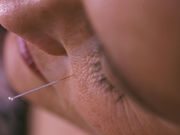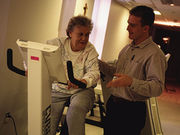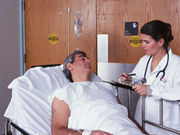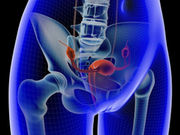Tag: Incontinence
Vascular Risk Factors Tied to Increased Incontinence Risk
Previous stroke or TIA, increased BMI are among risk factors for urgency urinary incontinence
Mixed Results on Acupuncture for Incontinence, Infertility
Benefit seen in stress incontinence; no benefit for infertility in polycystic ovary syndrome
Five-Year Risk of Repeat SUI, POP Surgery Less Than 10 Percent
Higher risks for women aged 65 and older, those initially undergoing pelvic organ prolapse surgery
Review Explores Botulinum Toxin in Overactive Bladder Treatment
Liposome encapsulated onabotulinumtoxin A reduces urinary frequency, urgency, not incontinence
Behavioral Treatment, Physical Activity Aids Urinary Incontinence
Combining behavioral tx with physical activity may improve urinary incontinence in frail older women
Autologous Urethral Sling No Benefit After Prostatectomy
No benefit seen in continence for sling placement during robotic assisted radical prostatectomy
Urgency, Incontinence Improve After Anterior Urethroplasty
Preoperative prevalences of 58 and 31 percent, respectively, decrease significantly postoperatively
Botox, InterStim Compared in Female Urinary Incontinence
Compared with sacral neuromodulation, onabotulinumtoxinA resulted in a small improvement
Tension-Free Vaginal Tape-Obturator Has Lasting Benefit
After 10 years, objective and subjective cure rates were 69 and 64 percent, respectively
Trans-Obturator Tape Cost-Effective for Urinary Incontinence
Randomized trial shows cost-effectiveness of trans-obturator versus tension-free vaginal tape














